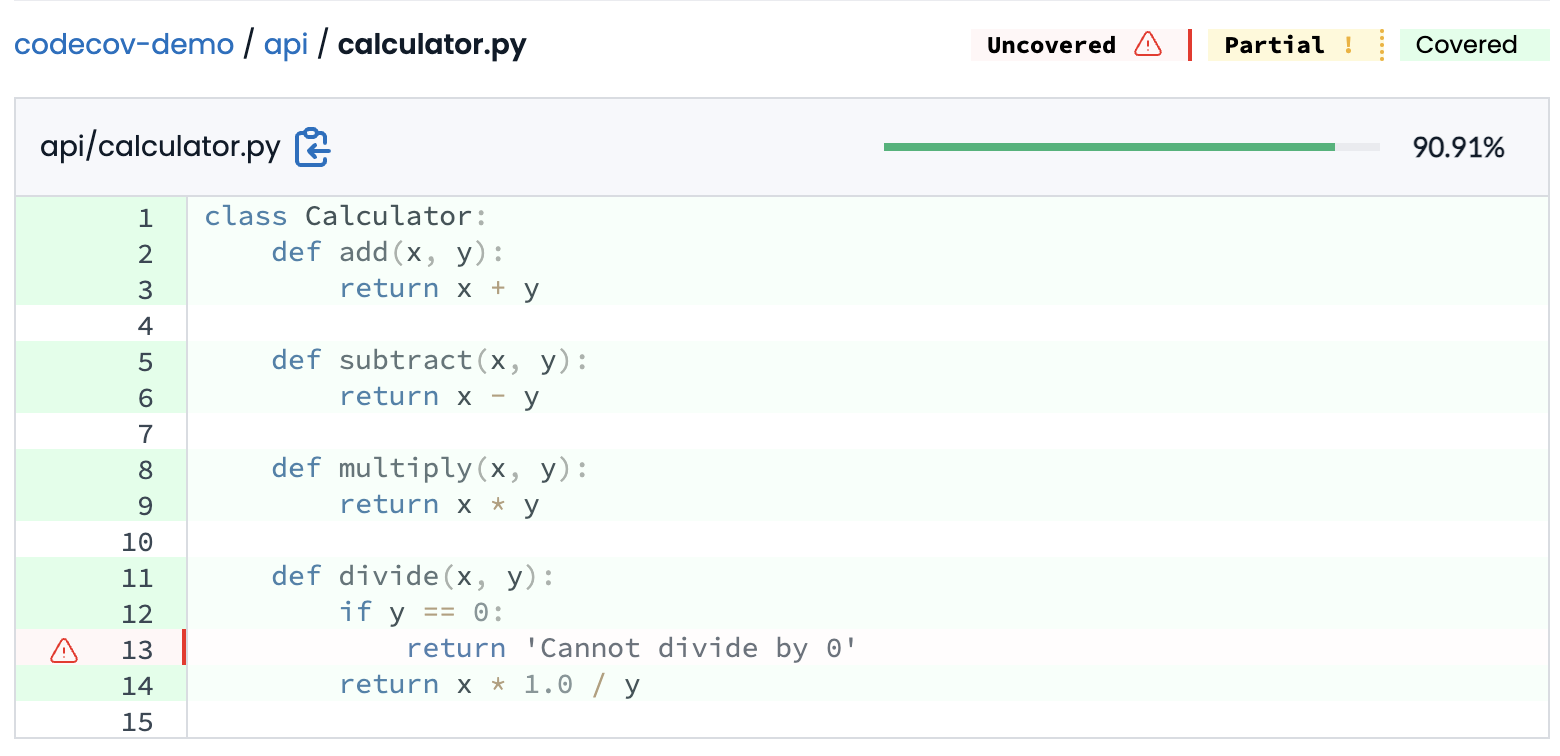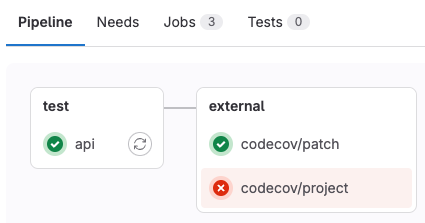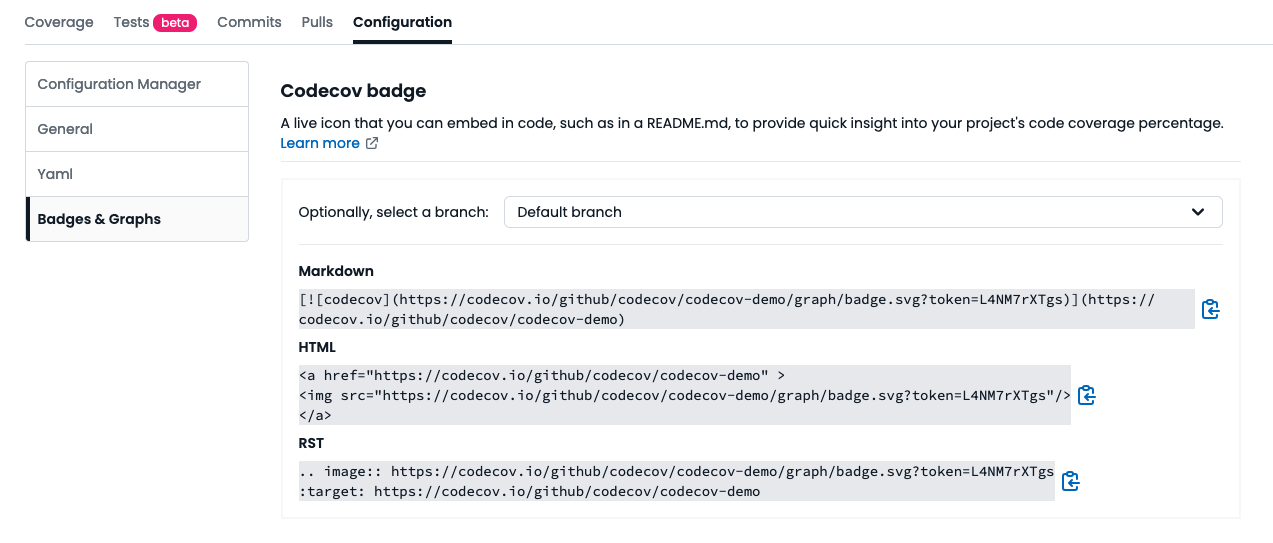3 - Customizing Codecov
Identify untested code
Now that we have coverage on our main branch, let’s see how to improve our coverage. Go back to Codecov and click into your demo repository.
Not seeing coverage information?If you are not seeing any coverage information, navigate to
Configuration->Generaland ensure your default branch ismain.
On the demo repository Coverage dashboard, you will see some data relating to the recent commit:
- The coverage chart will show you coverage change over time
- The sunburst graph highlights parts of the codebase that have low coverage
We will use the bottom section, the Fileviewer, to identify lines of code that haven’t been tested.

Click on api and calculator.py to see what hasn’t been covered.

Note that we haven’t added a test for line 13, dividing by 0.
Set coverage standards
Before we add the test, let’s set some configurations for this project. Pull the latest from main and create a new branch step3
git checkout main
git pull
git checkout -b 'step3'Add a codecov.yml in the root directory of the git repository with these values:
ignore:
- "api/app.py"
coverage:
status:
project:
default:
target: 100%
threshold: 1%
This configuration tells Codecov to ignore the code in app.py when calculating coverage, and to fail a status check if 100% of the (non-ignored) codebase is not covered with tests. However, it also allows for a 1% threshold, meaning the true minimum is 99%.
To see how this behaves on your project, commit the new file and open a merge request
When opening merge requests, be sure to select your own repository as the target branch, orset your project's default target branch
git add .
git commit -m 'step3: add project status check target'
git push origin step3You will notice that after CI finishes, we have two status checks, and the pipeline has failed.

The configuration we set (coverage at 100%) runs against the patch(the code in this merge request) and the whole project. Since none of the lines in this merge request needed coverage, our patch is fully covered. However, the coverage for the project is below the threshold we set.

The detail from the pipeline tells us that if we merge this code, project coverage will be 97.22%, which is a 36.88% increase over the main branch, but is still below the threshold we set.
If your settings include Pipelines must succeed, you will see Merge blocked, otherwise when you click Merge you will get a warning that you have unverified changes.
Since our project still has an uncovered line, we will need to add a test to cover it before we can pass all status checks.
Add a test for uncovered code
At the end of api/tests/test_calculator.py add a test for the divide by 0 case.
def test_divide_by_0():
assert Calculator.divide(2.0, 0) == 'Cannot divide by 0'Let’s commit and push our code to see if our project is fully covered.
git add .
git commit -m 'step3: cover divide by 0 case'
git push origin step3You will see the following status checks passing.

Once your changes are merged into main, take another look at your demo repository Coverage dashboard on Codecov!
Add the Codecov badge
Finally, let’s add a Codecov badge to your README.md file. You can copy the Markdown code from the Configuration tab in Codecov, under Badges & Graphs.

Your README.md file will look something like
[](https://codecov.io/gh/{{REPOSITORY}})As before, commit the changes and merge the merge request
git add .
git commit -m 'step3: add Codecov badge'
git push origin step3You should see the badge appear on the repository screen in GitLab

Updated 9 days ago